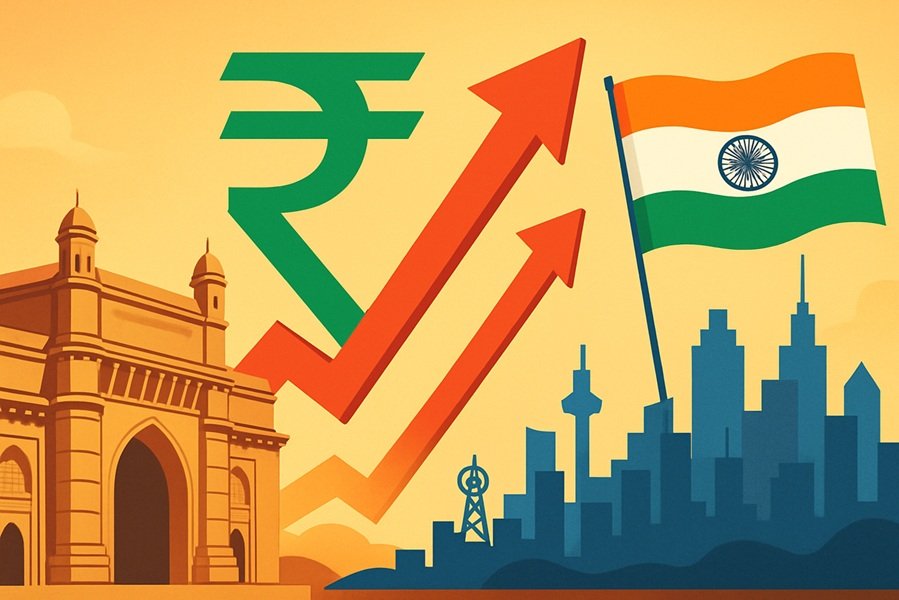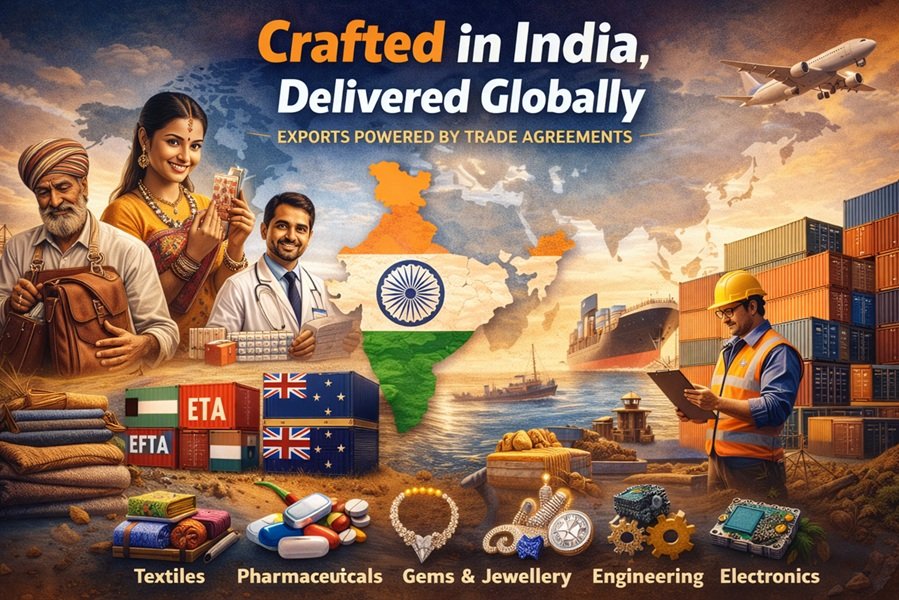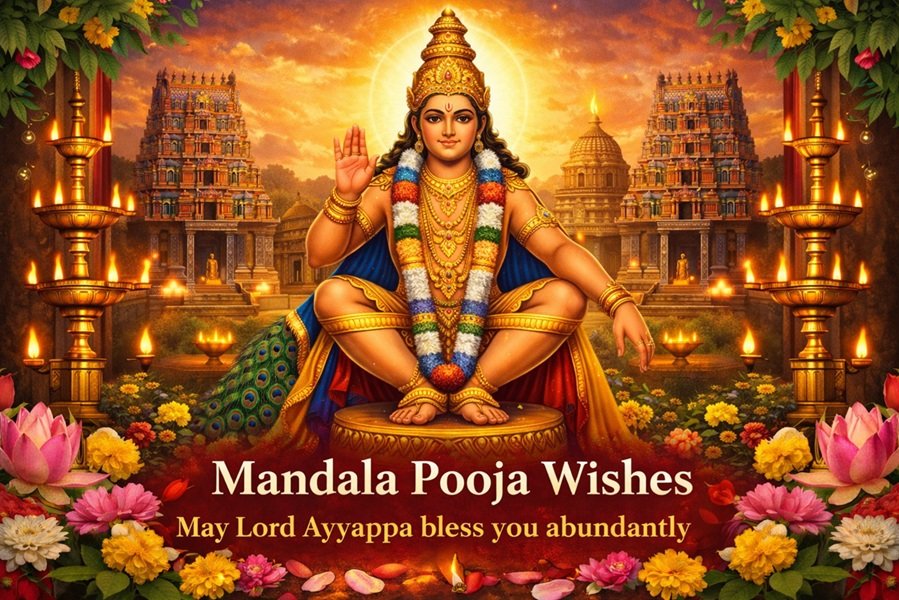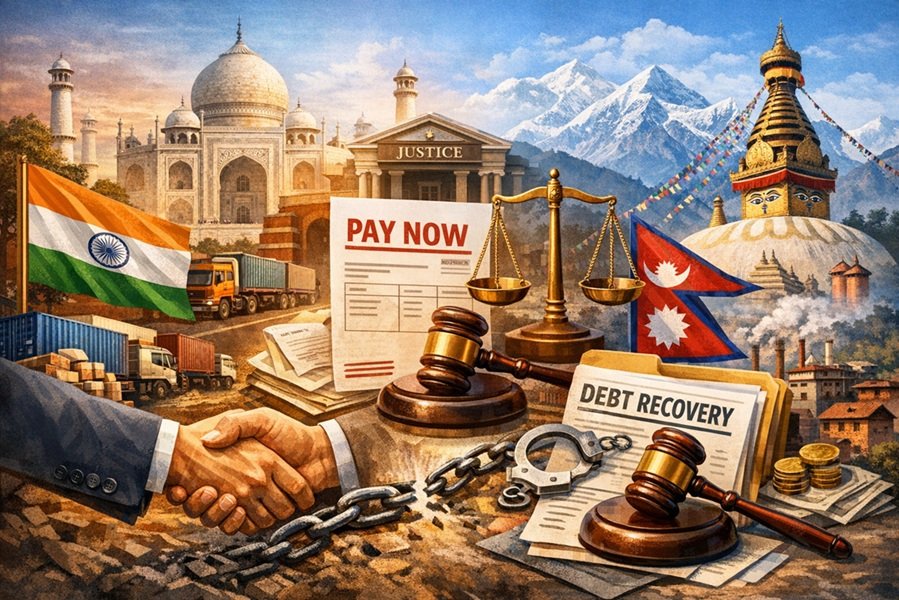
Introduction
When former U.S. President Donald Trump recently described India as a “dead economy” while announcing harsh new tariffs, he may have intended to deliver a political punch. But what he succeeded in doing was ignite a global debate—one that not only questions his grasp of global economics, but also highlights how deeply misinformed and misleading such a claim is in the current global context.
India is not a dead economy. India is the fastest-growing major economy in the world. It is a rising force—demographically, digitally, diplomatically, and economically. Trump’s characterization deserves not just a rebuttal, but an intelligent dissection.
Understanding Trump’s Statement: More Political Than Practical
Let’s be clear: Trump’s rhetoric is not rooted in economic analysis. It’s political theatre. His comment came after India refused to cut energy ties with Russia and continued purchasing discounted Russian crude. The context? U.S. elections are approaching, and Trump is courting nationalist and protectionist sentiments with “America First” posturing.
But to call India—a country with a $4.2 trillion economy and the fastest GDP growth rate among G20 nations—“dead” is not only inaccurate but laughably absurd.
Reality Check: The Indian Economy in 2025
1. India’s GDP Growth is Alive and Roaring
- 6.5% GDP growth in FY2024–25, beating estimates.
- Nominal GDP is expected to cross $4.2 trillion in 2025.
- India recently overtook Japan to become the 4th largest economy, on track to surpass Germany by 2028.
While the U.S. and Europe grapple with stagnation, labor shortages, and an aging population, India is booming—backed by domestic demand, digital transformation, and rapid industrial growth.
2. Demographics: India’s Biggest Asset
- Over 900 million people of working age.
- A median age of 28, compared to 38 in the U.S. and 47 in Japan.
- Urbanization and digitization are fueling a middle-class consumption surge—a critical engine for future global growth.
India isn’t dying; it’s maturing.
India vs the West: Who’s Protecting Whom?
Trump’s statement also reeks of hypocrisy. Let’s look at the facts:
• U.S. Tariffs? Protectionism, Not Pragmatism
While accusing India of being protectionist, Trump imposed 25% tariffs on Indian goods, despite India maintaining one of the most open economies among developing nations. Historically, it is the U.S. that blocks Indian steel, pharma, and digital firms with protectionist policies and arbitrary standards.
• On Russia: Selective Outrage
India’s energy partnership with Russia is born out of strategic necessity, not ideological affinity. While India buys oil to maintain energy security, Europe continues to import Russian LNG, and the U.S. itself imports uranium from Russia. Why the double standards?
Strategic Autonomy: India’s Global Stance
India has refused to be bullied—whether by China, the West, or Russia. That’s not weakness—it’s strategic autonomy.
India maintains strong defense ties with the U.S., participates in the QUAD, and trades with the EU and ASEAN. But it also preserves historical relations with Russia, a key arms and energy partner.
Rather than isolating itself, India is balancing—emerging as a reliable, stable power in a multipolar world.
Ground Realities: Economic Indicators that Speak Louder Than Rhetoric
| Indicator | Data (2025) |
|---|---|
| GDP Growth | 6.5% |
| Forex Reserves | $645 billion |
| FDI Inflows | $105 billion (2024) |
| Exports (Goods & Services) | $825 billion |
| Startup Ecosystem | 3rd largest globally |
| Digital Transactions (UPI) | Over 11 billion/month |
Dead economies don’t attract top investors like Apple, Google, Tesla, and TSMC, all of whom have deepened ties with India in recent years.
U.S.–India Ties: Friction Doesn’t Equal Failure
Tensions are normal between rising powers. But the India-U.S. partnership is too important to derail over rhetoric.
Common Interests:
- Countering Chinese aggression
- Ensuring Indo-Pacific security
- Boosting supply chain diversification
- Tech collaboration and semiconductors
Even with Trump’s hostility, the U.S. needs India as a geopolitical and economic partner.
Why Trump’s Comments Could Backfire
Trump’s words might win applause from protectionist voters—but they damage America’s global credibility and diplomatic maturity. Criticizing the world’s most populous democracy—an essential partner in global governance—sends the wrong signal.
It also emboldens China and Russia by weakening democratic alignment. The White House, regardless of who sits in it, must recognize India’s value—not belittle it.
India’s Real Challenges (And How It’s Solving Them)
It would be dishonest to say India has no problems. It does.
- Unemployment among youth.
- Skilled labor gaps.
- Inequality in rural–urban development.
But India isn’t ignoring these issues. Government schemes such as PM Gati Shakti, Skill India, PLI, and Digital India are tackling them head-on.
Unlike “dead economies,” India is experimenting, reforming, and transforming.
Final Word: Why the World Should Take India Seriously
India is not a perfect economy—but it is certainly not a dead one.
It is alive with ambition. Alive with growth. Alive with innovation. It is solving problems, scaling technology, building infrastructure, lifting millions from poverty, and reshaping global supply chains.
What Trump sees as a “dead economy” is actually an economy that doesn’t bend to U.S. pressure. That’s not weakness. That’s strength.
Read This: The World’s Top 10 Largest Economies by GDP
Conclusion: The Elephant Marches On
Donald Trump may seek headlines with dramatic statements, but India is focused on results, not rhetoric. The world cannot afford to misjudge or underestimate India. It is not just a regional power—it is a pillar of the global economic future.
As the elephant marches forward, it doesn’t stop for barking dogs. It simply keeps moving.






